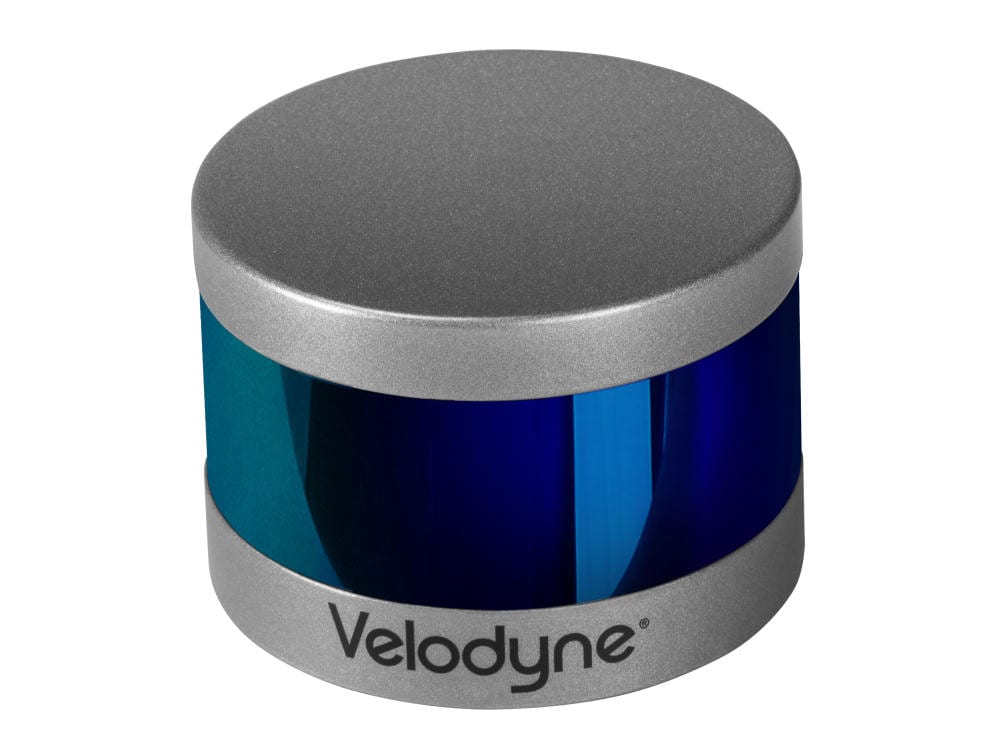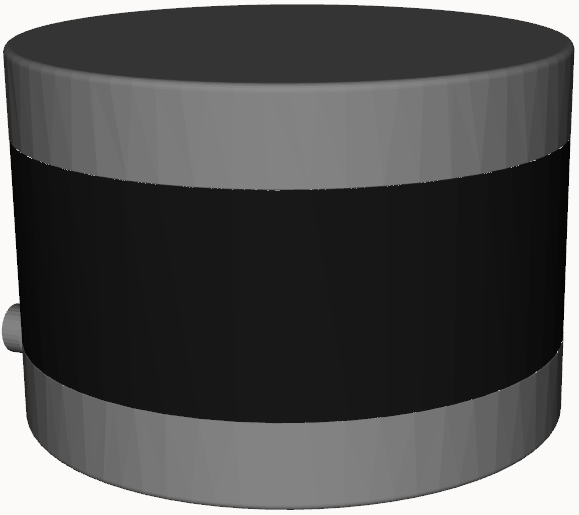Velodyne Puck Lite

Item Numbers
| Description | CPR Item | Sales Kit | Installation Kit, With Fasteners |
|---|---|---|---|
| Velodyne Puck Lite sensor | 016312 | — | — |
| Velodyne Puck Lite sensor, with M12 connector | 023729 | 029027 | 029026 |
Specifications
| Description | Value |
|---|---|
| Mass | 590 g |
| Voltage, Minimum | 9 V |
| Voltage, Maximum | 18 V |
| Voltage, Sensor | 12 V |
| Power, Average | 8 W |
| Data | Ethernet, 100 Mbit/s |
| Range, Minimum | 0.9 m |
| Range, Maximum | 100 m |
| Range, Accuracy | ±3 cm |
| View, Horizontal | 360° |
| View, Vertical | ±15° |
| Resolution, Horizontal | 0.4° |
| Resolution, Vertical | 2° |
| Operating Temperature, Min | -10 °C |
| Operating Temperature, Max | 60 °C |
Software Bringup
This sensor is included in the Clearpath Robotics robot package that is installed on all of our robots. This allows you to add or remove the sensor from your robot's software description by modifying the robot configuration yaml.
 | |
Package and Setup
The Velodyne LiDARs use the velodyne_driver ROS 2 Package. The driver is open source, maintained by the ROS community, and hosted on GitHub. Unlike other drivers, the visual description of the device is hosted in a separate repository. The description package, along with the simulator, is maintained by Dataspeed and hosted on BitBucket.
For more specifics on the way Clearpath's configuration system launches the velodyne_driver, see the Velodyne launch file and the default parameter file in clearpath_sensors.
Model
There are several types of Velodyne LiDAR. To switch between these, the model parameter must be set under the both the velodyne_driver_node and the velodyne_transform_node, and the calibration parameter must be set under the velodyne_transform_node.
| Name | Model | Calibration |
|---|---|---|
| Puck | "VLP16" | "VLP16db.yaml" |
| Puck Hi-Res | "VLP16" | "VLP16_hires_db.yaml" |
| Ultra Puck | "32C" | "VeloView-VLP-32C.yaml" |
| VLS-128 | "VLS128" | "VLS128.yaml" |
| HDL-32E | "32E" | "32db.yaml" |
| HDL-64E | "64E" | "64e_utexas.yaml" |
| HDL-64ES2 | "64E_S2" | "64e_s2.1-sztaki.yaml" |
| HDL-64ES3 | "64E_S3" | "64e_s3-xiesc.yaml" |
When setting the calibration parameter, prepend the path /opt/ros/humble/share/velodyne_pointcloud/params/ to the calibration file name in the table above.
Troubleshooting
Clearpath is committed to your success. Please get in touch with us and we will do our best to get you rolling again quickly: <support@clearpathrobotics.com>.
To get in touch with a salesperson regarding Clearpath Robotics products, please email <research-sales@clearpathrobotics.com>.
If you have an issue that is specifically about ROS and is something which may be of interest to the broader community, consider asking it on Robotics Stack Exchange. If you do not get a satisfactory response, please ping us and include a link to your question as posted there. If appropriate, we will answer on Robotics Stack Exchange for the benefit of the community.